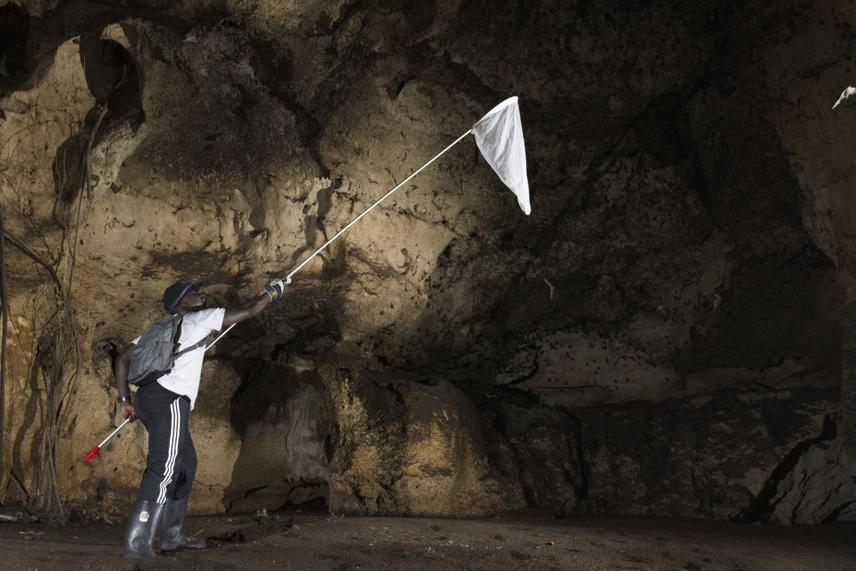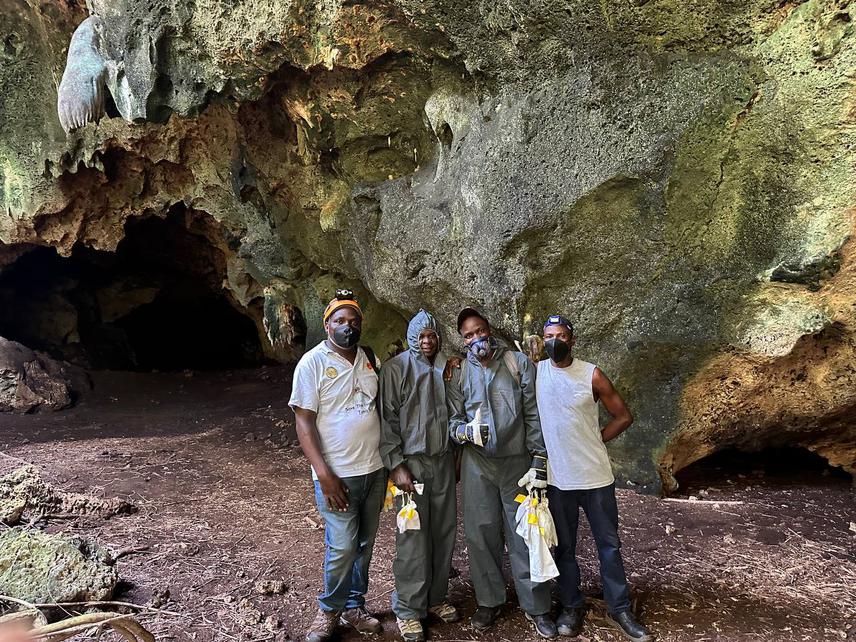David Onyimbi
Roost sites are an important habitat component for healthy bat populations. They serve as places for social interactions and the raising of young, as well as provide protection from predators and adverse weather. However, the lack of understanding of roost site selection for cavernicolous bats in Kenya hinders the creation of successful conservation initiatives for declining species. This study will investigate roost site selection by the endangered Hildegarde's Tomb Bat (HTB) in coral/karst caves along the Kenyan coast. The study aims to compare the physical characteristics and microclimate (temperature and humidity) of HTB roosts and non-roosts. Additionally, the external macro-habitats of the roost caves will be described. These factors are important because they influence the choice of roost in bats.

Researcher, David Onyimbi, capturing target sp. at Makuruhu cave in Watamu, during a confirmation exercise. © Karel De La Cruz.
The study area includes caves at Watamu (North Coast) and Shimoni (South Coast) where the HTB has been recorded. Data collection involves the use of temperature and humidity loggers to assess microclimatic conditions, physical measurements to evaluate cave dimensions and complexity, observation, photography and GIS techniques to help describe and map out macro-habitat heterogeneity around the caves. The resulting data will be analyzed to find out HTB's preferred humidity and temperature, the impact of physical characteristics, and the effect of macro-habitat heterogeneity on its choice of roost. Given the ecological and economic significance of bat species, this study is critical to the conservation of not only HTB but also bat species generally, as it is important for updating current Key Biodiversity Areas and proposing new ones. By offering insights into the variables influencing roost selection, it advances the expanding field of bat conservation and can help guide conservation initiatives in Kenya and beyond.

Team: Dr. Webala, Dr. Wechuli, David Onyimbi and Ali Toya, during confirmation of HTB presence at Mdenyenye Cave in Tswaka Village. © David Onyimbi.
Specific Objectives:
i. Determine the microclimatic characteristics of caves occupied by the Hildegarde’s Tomb bat and of caves not occupied by the target species.
ii. Determine physical attributes of coastal caves occupied by the Hildegarde’s Tom bat and of those not occupied by the target species.
iii. Describe the macro habitat surrounding of caves occupied by the Hildegarde’s Tomb bat.
Header: Colony of HTB at Makuruhu cave in Watamu, Kwale county. © Karel De La Cruz.